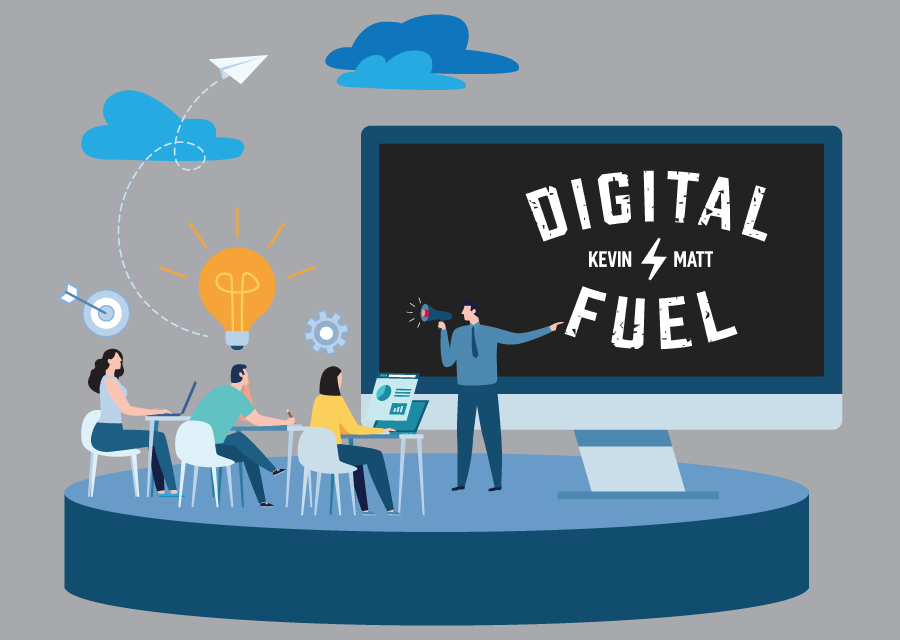Delivering Value During the Marketing Process
When you boil it down to its essentials, running a business is about delivering something of value to your customers. That value item changes from industry to industry and company to company, but if you’re not delivering value, success will remain elusive.
As a B2B company, you provide other businesses with products and services that improve their own ability to do their work and increase profits. Marketing what you have to offer is one of the many keys to successfully running a business-to-business company.
But marketing is not just about communicating the value of your services. Communicate and deliver value, not just information!
Table Of Contents
- Your Marketing Process Should Actually Deliver Value: Introducing the Flywheel!
- The Role of Marketing in the Flywheel
- Why It’s So Important to Deliver Value to Customers
- Examples of Delivering Value
- Are You Ready to Use the Flywheel to Give Your Potential Customers Something Valuable?
Your Marketing Process Should Actually Deliver Value: Introducing the Flywheel!
Even if you have spent years thinking about sales funnels, it’s time to learn about a different tool: the Flywheel!
The Flywheel is a marketing framework that keeps you at the forefront of the buyer’s experience at each of the stages in their journey.
The first thing you need to know is that the Flywheel Method uses inbound marketing strategies. Inbound marketing makes your company like a giant magnet: you pull customers to yourself by aligning your content and marketing messages to their purchasing journey.
Some of the most important concepts to know about when it comes to inbound marketing are as follows:
- Attraction: Use keywords and search engine optimization (SEO) to position yourself high in the search results of your best possible leads.
- Conversion: Instead of people making short visits to your website, convert them into repeat-visitors by giving them meaningful content.
- Closing: Use lead-nurturing strategies to bring people back to your site as many times as necessary until they make a purchase.
- Delighting: Build a great reputation with your customers so that they leave incredible reviews of your company, leading to even more engagement and sales.
The Flywheel is one of the best inbound marketing tools you can use.
Overview of the Flywheel
We have written about Flywheels in detail on our website, but let’s look at the basics!
A Flywheel features three cycles:
- The service>marketing>sales cycle
- The attract>engage>delight cycle
- The strangers>prospects>customers>promoters cycle
Keep in mind that because these are life cycles, they don’t end with the last item in the list. They keep cycling back, again and again, creating a force of perpetual motion and endless growth!
Force
Keep the wheel spinning by applying just the right amount of force. Instead of stopping because you made the sale, the Flywheel keeps spinning — it allows you to delight customers even after the sale, which in turn gives them the opportunity to promote you to their colleagues, peers, and followers!
Friction
Some actions will cause friction on the wheel, which makes it slow down. Conflict between departments, unaligned goals, and customer service failures are just some of the things that can cause friction. To keep your Flywheel spinning, pay attention to where you are unintentionally creating friction and work to remedy it.
The Role of Marketing in the Flywheel
Every part of the company contributes to the Flywheel: customer service, product development, web design, sales, marketing, and management all work alongside each other to keep things moving.
Understanding the Marketing Journey
When a buyer is making a decision, they go on a journey. Each step of the journey tracks along a stage of the marketing process, and there are opportunities for companies to provide value at each of these steps.
The journey involves three main stages, and each is a part of the Flywheel Model:
Awareness
This is when the buyer becomes aware of a problem they are experiencing. Perhaps there is a gap in their company’s software that makes work more difficult. Perhaps they need to replace or update a tool, increase their profit and growth, reduce expenses, or train employees more efficiently. There are limitless problems people can experience at work — at the awareness stage, a person realizes there is an issue that needs to be resolved.
Questions for marketing managers: Are you visible in your customers’ lives, helping them realize the problems that you could solve for them?
Consideration
Now it’s time for the buyer to start shopping. They may not even think of it as “shopping” but more like research. At this point, your potential buyer is out there, searching for information, resources, and solutions. They are possibly comparing prices and features, and they are definitely figuring out which businesses offer them something they are interested in!
Questions for marketing managers: Are you showing up in the search results for your targeted market? Does your website capture these leads and convert them to sales? Do you help potential buyers understand their needs and establish yourself as a source of reliable information? Are you effectively re-targeting visitors to your site to keep them interested and engaged with what you have to offer?
Decision
Ah, the moment of decision! This is the point where the buyer makes their final decision. They sign the contract, buy the product, or finalize their purchase.
Questions for your marketing managers: Are you nurturing your leads to this point? Do people have any unresolved pain points that make them less likely to choose you?
Why It’s So Important to Deliver Value to Customers
This is a simple and straightforward reality: marketing is more successful when it provides something valuable to your customer base.
Think about your experiences as a consumer when someone considers you to be in the market for their product: do you benefit from looking at an ordinary ad? Do you feel like viewing a billboard gives you something? When you encounter an ad before a video you’re watching online, do you like that experience, or do you want to skip ahead?
Today’s marketing teams are up against the huge challenge that comes from living in a world where advertising and marketing campaigns are absolutely everywhere.
To stand out, you have to provide more than a clever slogan or an attention-grabbing imagine. Today’s marketing is about providing REAL value to potential buyers.
Examples of Delivering Value
Give yourself a competitive advantage by delivering real value. Satisfy customers by giving them something they actually want or need. These are just the tip of the iceberg when it comes to delivering value, but if you are looking for somewhere to start, these are some of the things we recommend!
Useful Information
As your leads are doing market research, provide them with information that they can use! This establishes your company as an expert in the field and helps with relationship building.
Social Media
Great social media gives people something to comment on and engage with. It’s more than just having some followers; it’s about giving them a positive experience and a great association with your brand.
Relationships
HubSpot helps B2B companies develop relationships with their leads. Relationship management is such a valuable part of your marketing program!
Are You Ready to Use the Flywheel to Give Your Potential Customers Something Valuable?
It’s time, so let’s talk!
At Think Fuel, we are focused entirely on helping companies grow their businesses through online marketing, sales automation, and lead generation. We know that you have something valuable to offer, so let’s work together to make sure that your potential customers know that, too!
Share this
You May Also Like
These Related Stories

The Future of Lead Generation & Digital Marketing

Setting Marketing Expectations - Digital Fuel Podcast Episode 4
